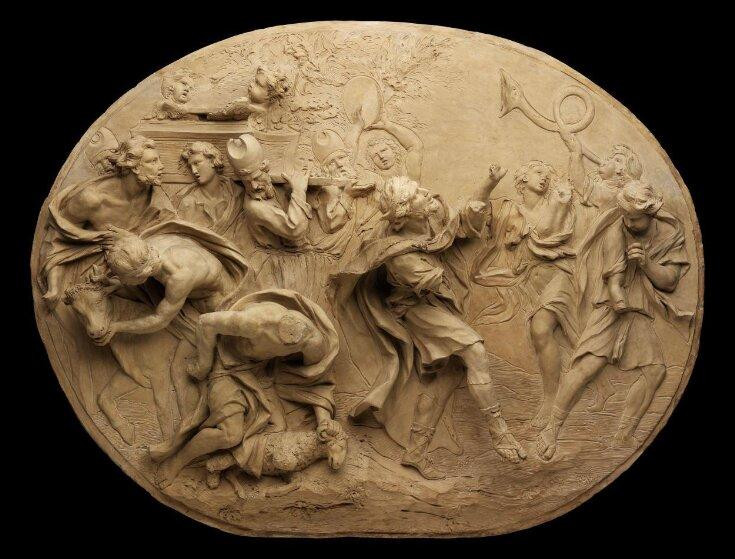Christian culture is rich with traditional sayings, many drawing inspiration from Psalms, liturgies, and Biblical narratives, as well as societal norms. One such saying, not found explicitly in Bible verses, is: “He Danced Without Leaving Room For Jesus,” or “She is dancing without leaving room for Jesus.” This popular phrase, while absent from scripture, speaks volumes about certain Christian perspectives on physical interaction, particularly within dance. But what exactly does it mean, and where did this unique expression originate?
Unpacking the Meaning: “Danced Without Leaving Room for Jesus”
When someone remarks that a couple “danced without leaving room for Jesus,” they’re suggesting the pair danced very closely, minimizing the space between their bodies. The underlying Christian expectation is that individuals, especially men and women, should maintain enough physical distance to hypothetically accommodate another person between them. This imagined “extra person” is Jesus, symbolically present as a chaperone. The idea is that impropriety is less likely to occur under the perceived supervision of Jesus Christ.
Purity and “Leave Room for Jesus”: A Matter of Principle
Physical purity holds significant value within many Christian communities. While purity encompasses various aspects, the Bible emphasizes sexual purity as a way to honor God through our bodies. 1 Corinthians 6:18-20 provides a clear directive: “Flee from sexual immorality. All other sins a person commits are outside the body, but whoever sins sexually, sins against their own body. Do you not know that your bodies are temples of the Holy Spirit, who is in you, whom you have received from God? You are not your own; you were bought at a price. Therefore honor God with your bodies.”
However, the definition of “sexual immorality” can be interpreted differently. Biblical teachings generally present sex as intended for marriage, leading to the view that premarital sexual activity is sinful. Consequently, excessive physical closeness can be seen as a precursor to inappropriate touching and potentially, sexual sin. This is why the “leave room for Jesus” concept extends beyond just dance partners. Variations of the phrase are commonly heard in various contexts:
- Leave room for Jesus.
- Save room for Jesus.
- Make room for Jesus.
Regardless of the setting, the principle remains consistent. Whether it’s sitting together on a couch, sharing a restaurant booth, or being alone at home, the admonition to “leave room for Jesus” applies. The intention is to minimize temptation. The theory suggests that maintaining physical space reduces the likelihood of premature intimacy. Adding the symbolic presence of Jesus, who empowers believers to live holy lives, might encourage couples to consider the implications before escalating physical closeness.
It’s important to acknowledge that not all interactions between couples inherently lead to sin, and not all physical touch is inherently sinful. However, activities like dancing, particularly close dancing, are often viewed as potentially risky for Christians committed to purity.
 Couple enjoying a lively dance at a social gathering
Couple enjoying a lively dance at a social gathering
Tracing the Origins: Where Did “Dancing Without Leaving Room for Jesus” Come From?
Dance, in its essence, can be a very sensual art form. In the animal kingdom, dance frequently serves as a courtship ritual. A successful dance display can effectively attract a mate. Human dance, too, can be used for seduction, although it also exists as a harmless social activity. This duality and ambiguity surrounding dance contribute to the hesitation many Christians feel about engaging in it. Therefore, the phrase “leave room for Jesus” likely arose from a desire to establish clear and healthy boundaries for believers regarding physical intimacy, especially in social settings like dancing.
Concrete historical records detailing the precise origin of “danced without leaving room for Jesus” are scarce. Given that purity standards are prevalent in numerous religions, the development of such a phrase to communicate expectations around purity is not surprising.
The phrase most likely gained traction during one of the sexual revolutions of the 20th century. Periods of increased acceptance of promiscuity, notably in the 1920s, 1960s, and 1990s, prompted conservative Christian communities to seek ways to protect their youth from what they perceived as the moral decay of dance halls and evolving secular attitudes towards sexuality.
These cultural shifts spurred the rise of various purity movements and programs, including purity pledges, purity rings, and purity balls in the 1990s. The coining and popularization of “leave room for Jesus” was likely one of the strategies developed within these eras to reinforce traditional purity standards.
Modern Interpretations: “Leave Room for Jesus” Today
While you still occasionally hear “They danced without leaving room for Jesus” or “Save room for Jesus,” the phrase has largely shifted away from being a serious purity admonition. In contemporary usage, it’s more often employed satirically, humorously, or as a cultural reference.
The phrase has permeated modern culture, appearing in unexpected places. For instance, it was featured in an episode of the popular ABC show, Black-ish, and has become a popular online meme. The movie Footloose, while not explicitly using the phrase, revolves around a community that believes dance will corrupt their children’s morals, echoing the sentiment behind “leave room for Jesus.”
More recently, churches have even repurposed the phrase for public health messaging. During the COVID-19 pandemic, some congregations playfully used “leave room for Jesus” on posters to encourage social distancing, reminding people to maintain physical space to slow virus transmission.
The variation “make space for Jesus” is also evolving, now frequently used to encourage individuals to prioritize Jesus’s presence and influence in their lives. In today’s fast-paced, distraction-filled world, reminding believers to create room for Jesus in their daily routines and thoughts is seen as a vital spiritual practice.
Dancing in the Bible: A Historical Perspective
Dancing has been a common and multifaceted practice throughout biblical history. It held significant importance in Hebrew culture, serving as a means of worship, praise, and celebration of festivals and victories.
Biblical Figures Who Danced for God
Miriam, Moses’s sister, led women in celebratory dance and song after the parting of the Red Sea: “Then Miriam the prophetess, Aaron’s sister, took a timbrel in her hand, and all the women followed her, with timbrels and dancing.” (Exodus 15:20 NIV).
Women danced and sang to celebrate David’s victory over Goliath: “When David returned after striking down the Philistine, the women came out from all the towns of Israel to meet King Saul with singing and dancing, with joyful songs and with timbrels and lyres. As they danced, they sang: ‘Saul has slain his thousands, and David his tens of thousands.’” (1 Samuel 18:6-7 NIV).
 King David dancing with joyous abandon before the Ark of the Covenant
King David dancing with joyous abandon before the Ark of the Covenant
King David famously danced before the Lord with great enthusiasm when the Ark of the Covenant was brought to Jerusalem. His dance was so expressive that it embarrassed his wife. “And David danced before the Lord with all his might. And David was wearing a linen ephod. So David and all the house of Israel brought up the ark of the Lord with shouting and with the sound of the horn. As the ark of the Lord came into the city of David, Michal the daughter of Saul looked out of the window and saw King David leaping and dancing before the Lord, and she despised him in her heart. And they brought in the ark of the Lord and set it in its place, inside the tent that David had pitched for it. And David offered burnt offerings and peace offerings before the Lord.” (2 Samuel 6:14-17 ESV).
The prophet Jeremiah spoke of dance as a form of praise and rejoicing in God’s restoration: “Again I will rebuild you and you will be rebuilt, O Virgin Israel. Again you will take up your timbrels and go out to dance with the joyful.” (Jeremiah 31:4 NIV). And, “Then young women will dance and be glad, young men and old as well. I will turn their mourning into gladness; I will give them comfort and joy instead of sorrow.” (Jeremiah 31:13 NIV).
The Bible even explicitly encourages dancing in certain contexts: “There is a time for everything, and a season for every activity under the heavens: … a time to weep and a time to laugh, a time to mourn and a time to dance…” (Ecclesiastes 3:1, 4 NIV).
Several Psalms also highlight the spiritual value of dance: “Let them praise his name with dancing and make music to him with timbrel and harp.” (Psalm 149:3 NIV). “Praise him with timbrel and dancing; praise him with the strings and pipe!” (Psalm 150:4 NIV).
Sinful Dancing in the Bible: A Word of Caution
However, the Bible also presents negative examples of dancing. The Israelites engaged in idolatrous dancing around the golden calf after leaving Egypt: “When Moses approached the camp and saw the calf and the dancing, his anger burned and he threw the tablets out of his hands, breaking them to pieces at the foot of the mountain.” (Exodus 32:19 NIV).
 Depiction of sinful dancing around the golden calf, illustrating idolatry
Depiction of sinful dancing around the golden calf, illustrating idolatry
Another instance of idolatrous dance occurred on Mount Carmel. Elijah challenged the prophets of Baal to a contest, and they danced wildly around their altar, trying to invoke Baal: “So they took the bull given them and prepared it. Then they called on the name of Baal from morning till noon. ‘Baal, answer us!’ they shouted. But there was no response; no one answered. And they danced around the altar they had made.” (1 Kings 18:26 NIV).
King Herod’s stepdaughter’s seductive dance led to the unjust execution of John the Baptist: “When his daughter Herodias came in and danced, she pleased Herod and his dinner guests. The king said to the girl, ‘Ask me for anything you want, and I’ll give it to you.’ … She went out and said to her mother, ‘What shall I ask for?’ ‘The head of John the Baptist,’ she answered. At once the girl hurried in to the king with the request: ‘I want you to give me right now the head of John the Baptist on a platter.’” (Mark 6:22, 24-25 NIV).
These examples demonstrate that dance itself is not inherently good or bad. It can be used to glorify God or to offend Him. Discernment is essential for Christians to understand how dance fits into their faith and life.
Did Jesus Dance? Considering Jesus as an Example
Jesus serves as the ultimate model for Christian living. Looking to his example is crucial. So, did Jesus himself dance? The Bible doesn’t explicitly state whether Jesus danced or not. However, Jesus was Jewish, and dance was an integral part of Jewish culture. It’s plausible that he participated in celebratory dances appropriate to his cultural context. Jesus notably attended a wedding in Cana, where he performed his first miracle (John 2). Jewish weddings were joyous, extended celebrations, and it’s likely that Jesus joined in the customary dances.
Jesus also alluded to dancing in a casual reference when speaking to his generation: “To what, then, can I compare the people of this generation? What are they like? They are like children sitting in the marketplace and calling out to each other: ‘We played the pipe for you, and you did not dance; we sang a dirge, and you did not weep.’” (Luke 7:31–32 NIV).
In this passage, Jesus uses an analogy that would resonate with his audience. He assumed they would understand that joyful music naturally calls for dancing.
 A person expressing joy through dance, symbolizing dancing for Christ
A person expressing joy through dance, symbolizing dancing for Christ
Dancing for Christ: Honoring God in Movement
Jesus’s style of dance, if he did dance, would likely differ significantly from contemporary dance styles. Jewish rabbis for centuries have discouraged mixed-gender dancing due to concerns about inappropriate intimacy. In Jesus’s time, scrutiny over physical contact between men and women was extremely rigorous. So, what does Jesus’s likely participation in dance tell us about “dancing without leaving room for Jesus”? It suggests that there is a way to dance that honors God.
1 Corinthians 10:31 offers a guiding principle for Christians: “So whether you eat or drink or whatever you do, do it all for the glory of God.” Unmarried individuals can engage in dance without succumbing to sexual impurity. “Leaving room for Jesus” doesn’t need to be a literal measurement of physical space between dance partners. However, ensuring that we “save space” for Jesus – that is, prioritize honoring Him – in every aspect of our lives is a valuable guideline for any Christian. By submitting to the Holy Spirit’s guidance and asking, “Does this action honor God?”, we can confidently dance for Christ.

